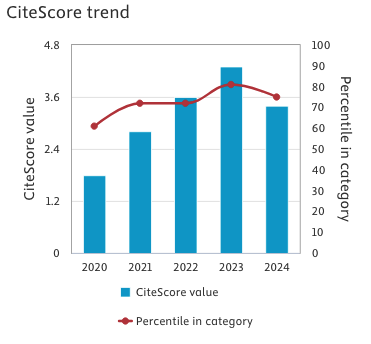Congenital idiopathic knee dislocation: a clinical case useful for defining an etiological hypothesis, times and methods of treatment
Keywords:
knee dislocation, fetal movements, patella, manual reductionAbstract
Congenital knee dislocation (genu recurvatum) is a rare condition, occurring in about 1 in 100,000 live births. It can be associated with genetic syndromes or neurological disorders, but also occurs as an isolated condition. Factors such as oligohydramnios, breech presentation, and other limb abnormalities are often related. This case report details the presentation of a newborn female delivered at 37 weeks by emergency cesarean section, who exhibited congenital left knee dislocation without any other abnormalities. Upon birth, the left leg was observed to be hyperextended, with the foot positioned toward the body and slight cyanosis on the plantar skin. Initial treatment involved non-pharmacological pain management, followed by a successful manual reduction of the dislocation and application of a splint. The joint remained stable after 60 days of treatment, with no recurrence noted. Genetic testing and other screenings returned normal results. The discussion suggests an idiopathic nature of the dislocation, as the absence of a prenatal diagnosis points to a potential late-acquired condition in pregnancy. Hypotheses include limited uterine space and fetal movements that could have contributed to hyperextension. Pressure exerted on the small fetal patella likely facilitated lateral displacement, allowing the dislocation to occur. Early intervention proved crucial to prevent long-term complications, though the rarity of this condition makes future prognosis difficult to predict.
References
Mehrafshan M, Wicart P, Ramanoudjame M, Seringe R, Glorion C, Rampal V. Congenital dislocation of the knee at birth - Part I: Clinical signs and classification. Orthop Traumatol Surg Res. 2016;102(5):631-633. doi:10.1016/j.otsr.2016.04.008
Wilebski BJ, Alam A, Lambert RR, Douvoyiannis M. Congenital Dislocation of the Knee in the Delivery Room. Am J Case Rep. 2024 May 14;25:e943725. doi: 10.12659/AJCR.943725. PMID: 38741359; PMCID: PMC11106790.
Yeoh M, Athalye-Jape G. Congenital knee dislocation: A rare and unexpected finding. BMJ Case Rep. 2021;14(1):e234881. doi: 10.1136/bcr-2020-234881.
Çıraklı S, Çıraklı A. Neglected intrauterine bilateral congenital knee dislocation. Jt Dis Relat Surg. 2021;32(2):542-545. doi: 10.52312/jdrs.2021.79966. Epub 2021 Jun 11. PMID: 34145837; PMCID: PMC8343829.
Palco M, Rizzo P, Sanzarello I, Nanni M, Leonetti D. Congenital and Bilateral Dislocation of the Knee: Case Report and Review of Literature. Orthop Rev (Pavia). 2022 Apr 25;14(3):33926. doi: 10.52965/001c.33926. PMID: 35775035; PMCID: PMC9239366.
Hirade T, Katsube K, Kato F. Bilateral Congenital Dislocation of the Knee. J Pediatr. 2021;229:299-300. doi:10.1016/j.jpeds.2020.10.003
Downloads
Published
Issue
Section
License
Copyright (c) 2025 Pier Luigi Bacchini, Tiziana Corsini, Piera Manfredi, Galeazzo Concari

This work is licensed under a Creative Commons Attribution-NonCommercial 4.0 International License.
This is an Open Access article distributed under the terms of the Creative Commons Attribution License (https://creativecommons.org/licenses/by-nc/4.0) which permits unrestricted use, distribution, and reproduction in any medium, provided the original work is properly cited.
Transfer of Copyright and Permission to Reproduce Parts of Published Papers.
Authors retain the copyright for their published work. No formal permission will be required to reproduce parts (tables or illustrations) of published papers, provided the source is quoted appropriately and reproduction has no commercial intent. Reproductions with commercial intent will require written permission and payment of royalties.






